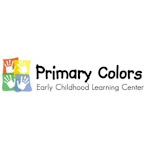In today's busy world, many families require childcare services to accommodate their work schedules and other commitments. Both serve as important resources, providing a safe and nurturing environment for children and essential learning experiences that contribute to their development. They both provide valuable learning environments, but they differ in several key aspects. This article will help you understand the main differences between daycares and preschools, enabling you to make a more informed decision based on your child's needs and your family's preferences.
Age Range and Structure
One of the most significant differences is the age range they serve. Daycares typically cater to children from infancy up to preschool age, while preschools focus on children between the ages of 3 and 5. Furthermore, daycares usually offer more flexible hours and year-round care, making them ideal for working parents. In contrast, preschools often follow a more structured schedule and may adhere to a traditional school calendar.
Educational Approach
The educational approach varies between the two. While both offer opportunities for learning and development, preschools typically have a stronger emphasis on academic preparation. Preschool curricula are designed to develop a child's cognitive, social, emotional, and physical skills in preparation for kindergarten. On the other hand, daycares focus more on providing a nurturing environment where children can engage in play-based learning and socialize with their peers.
Class Size and Staffing
Another key difference between daycares and preschools in Slidell, LA or anywhere else, is the class size and staffing. Preschools often have smaller class sizes and a lower child-to-teacher ratio, allowing for more individualized attention and instruction. Due to their broader age range and larger group sizes, daycares may have a higher child-to-teacher ratio. It's essential to consider your child's needs and preferences when evaluating class size and staffing.
Curriculum and Learning Environment
Preschools typically follow a more structured curriculum that aligns with early learning standards and prepares children for kindergarten. This may include activities such as circle time, group lessons, and centers focused on literacy, math, science, and art. While still providing learning opportunities, daycares often have a more flexible curriculum that focuses on play-based learning and social development.
Parent Involvement
Parent involvement can also differ between the two. Many preschools encourage parents to participate in classroom activities, attend parent-teacher conferences, and support fundraising efforts. Daycares may have fewer structured opportunities for parent involvement but may still welcome parent participation in special events or daily activities.
The Final Thought
When deciding between preschools and daycares in Slidell, it's essential to consider your child's needs, your family's schedule, and the specific offerings of each program. Both options provide valuable learning experiences and can help your child develop essential skills for future success. If you're looking for a high-quality early childhood education program that combines the best elements of both daycares and preschools, consider Primary Colors Preschool. With a nurturing environment, a well-rounded curriculum, and a focus on play-based learning, they offer the ideal setting for your child's growth and development. For detailed information, visit this website- Primarycolorspreschool.com.



0 Comments